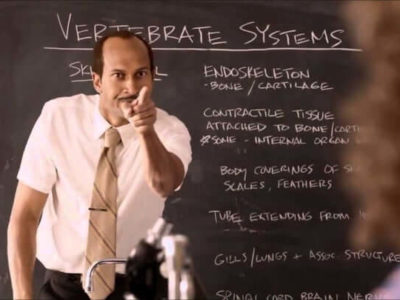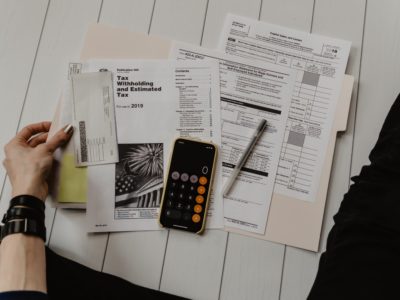Everyone worries about this looming force in college life. The haunting of student loans will always persist as that final boss you must face once you receive your diploma. Some make it out of college unscathed by this heavy financial burden. Due to the sometimes ludicrously overpriced tuition of some universities, though, many find themselves forced to enter into debt to get their degree. Even if you can’t find any change in your couch cushions or piggy bank, you can find a few ways to either ease the loan payment process. Better yet, have your loans forgiven all together.
Take advantage of these tips for how to get student loans forgiven to remove your student debt quick.
1. Become a Public School Teacher

A qualified school teacher who works for five consecutive years will be eligible to have anywhere between $5,000 and $17,500 of their student loans forgiven According to the U.S. Department of Education’s Federal Student Aid Program. Hit that maximum forgiveness as a mathematics, science or special education teacher. The catch? The school that employs you must qualify as a low-income school. This means that you won’t simply go into any teaching job and expect to receive the forgiveness benefits. “I worked with a colleague who took advantage of this,” said Music Director of Andrew Jackson High School Reginald Mitchell. “It’s a solid program for easing the stress of loans, especially since teaching in an underfunded environment is very difficult due to the lack of resources.” If you can handle this tough career, you’ll find a pot of gold (or of forgiven loans) at the end of your teaching rainbow.
2. Public Service

Public Service Loan Forgiveness aims to provide full forgiveness to a student’s loans after 120 consecutive payments towards it if they work under a specific type of employment. This amounts to about 10 years of on-time monthly payments. Working full-time (at least 30 hours a week) at a government position, a 501 (c)(3) nonprofit organization, an AmeriCorps position or the Peace Corps will qualify you for forgiveness under the PSLF guidelines. The government positions can operate on the state, federal or local level so that provides a whole host of opportunities for a variety of different majors. Keep in mind that this, along with most other forgiveness programs, focus more on federal loans than private ones. Make sure you look more deeply into your field of employment to find more options that apply to private loans.
3. Military

As of 2018, the Military College Loan Repayment Program (CLRP) provides up to $65,000 of federal loan forgiveness to any loans that were taken out before joining or reenlisting into the armed services. However, different military branches offer different benefits. The Army and Navy’s benefits top out at around $65,000, with the latter of the two requiring four to six years of service. The National Guard tops out at $50,000 and requires both enrollment in eligible jobs and an eight-year initial enlistment agreement. Coast Guard tops out at $30,000 with a requirement of a three-year service contract. Stay cautious with that one though. If you get discharged or transfer to another branch, the Coast Guard will force you to repay the loans forgiven by the Coast Guard’s program. The Air Force unfortunately tops out around $10,000 and the Marines don’t really participate in these CLRP programs at all. Despite the disparities between branches, you deserve honor if you choose to enlist in any of them.
4. Income-Driven Forgiveness Plan

A lot of students will leave college and not apply for an income-driven repayment plan. These plans involve predetermined monthly payments towards your loans based on your income and family size. Depending on the plan you choose, the payments will typically take 10 to 20 percent of your discretionary income. This may sound like what you expected after college. “Of course I’m going to pay my loans like this,” you might think. What makes these income-driven plans so great comes in the fact that after 20-25 years of consistent payment, depending on the plan you choose, whatever balance you owe will render as completely forgiven. Sure, that’s a long time, but I doubt anyone reading this would prefer to pay the entirety of their loan amount if they don’t have to.
The four primary forms of income-driven payment include the REPAYE Plan, the PAYE plan, the IBR plan, and the ICR plan. REPAYE and PAYE will take no more than ten percent of your discretionary income and will provide forgiveness for your total amount after 20 years of payment (and 25 for graduate programs). IBR takes ten percent as well but will take 15 percent if you borrowed your loans after July 1, 2014. They also forgive their loans after 20 years. The lesser of the plans, the ICR, requires 20 percent of discretionary income and requires 25 years of payment for loans to register as forgiven. “Loans will always suck,” said CDC employee Michael Ashley. “My forgiveness plan works well because it takes a reasonable amount of money from my account each month automatically. So I remain stable while also working toward an end goal of forgiveness.”
5. Health Professions

Doing good in the medical field can reap major benefits. Several medical fields and services offer loan forgiveness plans for nurses, care physicians, dentists, mental/behavioral health professionals and researchers. The National Health Service Corps Loan Repayment Program (NHSC LRP), in a way similar to teachers, can provide up to $60,000 to health care professionals who commit for two years to working in a shortage area, or a region without a significant medical presence. The Nurse Corps Loan Repayment Program also encourages work in shortage areas as they will provide up to 60 percent of the original balance of your qualifying loans. Various other field-specific programs exist, so many in fact that it seems nearly impossible to list all of them. If you feel that your current field of study even mildly qualifies as a health profession, do research to find a loan forgiveness program that applies to your career.



















